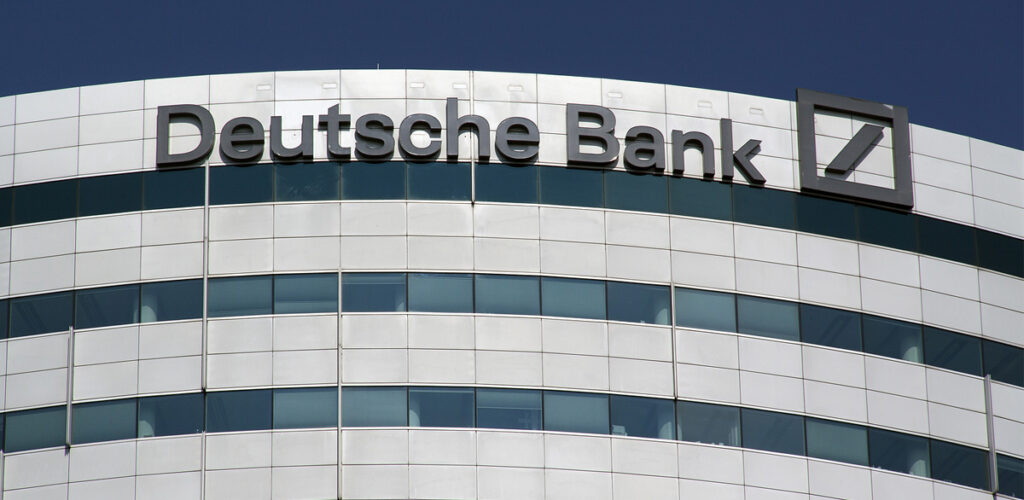 The US dollar risks falling from its safe-haven position as global confidence in the leading currency wanes. In a recent note, Deutsche Bank warned investors of the greenback’s rapidly deteriorating outlook as economic and geopolitical shifts threaten its dominance. Germany’s flagship financial institution highlighted the disappearing correlation between the dollar and safe-haven assets and the country’s mounting debt burden as signs of a declining currency.
The US dollar risks falling from its safe-haven position as global confidence in the leading currency wanes. In a recent note, Deutsche Bank warned investors of the greenback’s rapidly deteriorating outlook as economic and geopolitical shifts threaten its dominance. Germany’s flagship financial institution highlighted the disappearing correlation between the dollar and safe-haven assets and the country’s mounting debt burden as signs of a declining currency.
USD Shows Weakness
After a sweeping uptrend throughout 2024, the dollar is exhibiting signs of weakness. In contrast to market expectations, the dollar has buckled amidst Trump’s broad tariff strategy. The US Dollar Index, which measures the dollar against a basket of currencies, has fallen 5% since Trump’s inauguration.
Furthermore, the Canadian dollar has been resilient, and the Euro has even gained in the face of a developing trade war.
“What stands out in today’s market reaction is that the dollar is not strengthening materially,” as George Saravelos, the bank’s global head of FX strategy, explains, “We would not have expected these market moves at the start of the year.”
Seismic Shifts Test Dollar Dominance
The backdrop for the dollar’s fledgling performance is seismic economic and geopolitical shifts scaring away global investors. For years, adversaries have actively been shedding the greenback in favor of local currencies and physical gold to skirt sanctions and other forms of dollar weaponization and shield against fiscal mismanagement.
Lately, historic allies are contemplating de-dollarization, too, as Trump launches a costly trade war and calls the Western defense alliance into question.
Deutsche Bank acknowledges that the “speed and scale of global shifts is so rapid that” the dollar ceasing to be the world reserve currency “needs to be acknowledged as a possibility.”
👉 Related Read: Dollar Dominion: How the Dollar Became the World Reserve Currency?
An Unstable New Reality
Saravelos highlighted, in particular, a declining historical correlation between the dollar and
risk assets as well as the growing US current account deficit, which has typically marked the limits of dollar “overvaluation.” With a currency disconnected from stock markets, investors have a tougher time anticipating the dollar’s performance. Simultaneously, a widening US trade deficit indicates an oversupply of greenbacks circulating across the world which usually leads to market instability and currency devaluation.
Damaged Growth Outlook
Stunted economic growth is another major crack forming in the dollar’s foundation. A slew of alarming economic data including stubborn inflation, decreased consumer confidence, and a drop in spending have triggered lower growth projections. The Atlanta Fed’s GDPNow forecast for Q1 output dipped to a low of -2.8%.
This weaker domestic outlook combined with positive expectations from a proactive Europe further erodes the dollar’s prospects.
As Deutsche Bank outlines, “It is reasonable in this context for the market to start pricing in a narrowing of the growth differential between the US and the rest of the world.”
Neutral…for Now
Deutsche Bank is sounding the alarm about the greenback’s future but maintains a neutral outlook in the near term.
More specifically, Saravos explains the company has “become more open-minded to the prospects of a broader weaker trend unfolding.”
The damaging combination of dipping investor confidence, rising alternative currencies, and federal fiscal mismanagement, could prove to be a delayed knock-out punch to USD hegemony. Tragically, the average American is poised to suffer the brunt of the economic fallout.


